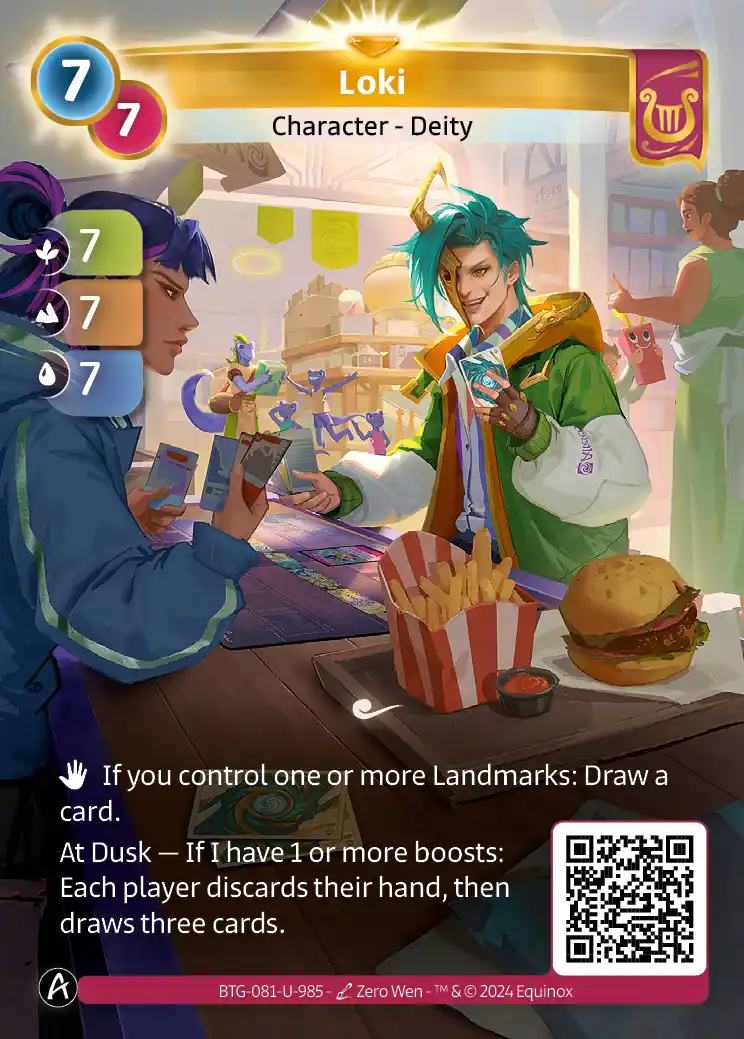| Score | Summary | Description |
|---|---|---|
| 1 | Very weak | Severely understatted with abilities that will rarely be realized. |
| 2 | Weak | Slightly understatted with abilities that usually won’t compensate. No stronger than an average common. |
| 3 | Solid | On-rate stats, or understatted but its ability often compensates. Also includes cards with high ceilings but excessive requirements. Distinctly stronger than an average common, but no stronger than an average rare. |
| 4 | Strong | Above-rate stats, or having abilities that push it well above-rate when its conditions are met. Distinctly stronger than an average rare. |
| 5 | Very strong | Well above-rate stats and/or having abilities that can sometimes result in a large swing. A card that is a 5 but not a 6 is held back either by not offering more than just stats, or by having a slightly awkward cost or requirement. |
| 6 | Exceptional | Will reliably swing a game in its favor. These often feature rare abilities (e.g. removal, ramp, card advantage), repeatable triggers, or heavy synergy with a certain hero’s gameplan. |
| 7 | Incredible | Can singlehandedly win games when it is played. Some possess universally strong and grossly undercosted disruption effects. Others abuse a combination of generated abilities or an interaction with another card or hero. |
Each rating assumes the unique is put in the deck that best supports it. I consider how it will perform on average in that deck, not necessarily the best-case scenario.
Cards are rated in the context of the standard constructed card pool at the time of the rating.
Rationale
While nothing can replace thoughtful discussion about a unique, I wanted to have a shorthand to identify a unique’s potential. This is especially important because uniques in Altered are unprecedented in terms of their impact on limited, in-person trading, and the online marketplace.
I’ve settled on a numeric scoring system that groups uniques into buckets. Seven was the minimum number of buckets that was able to capture the distinctions I found meaningful.
The lower cutoff points are calibrated against other rarities. A 3 is stronger than an average common. A 4 is stronger than an average rare.
I expect there to be very few uniques that will be ranked a 6 or a 7. Still, I think the distinction is important for the most competitive players who care about optimizing each of their unique slots.
Notes
The lower buckets compare uniques to the average power level at a given rarity, not the power level of a specific unique’s lower rarity counterparts. For example, if a unique is stronger than the rare of the same family, but the rare itself isn’t strong enough to see play, that unique is not necessarily a 4 or higher.
If a common or rare is strong enough that you want to include three copies in a deck, uniques from that family are subjected to a harsher grading scale; they come with the condition that you must play one fewer copy of that card.
Example distribution
I’ve put together rating distributions for all of the uniques I’ve personally opened.
Beyond the Gates
| Score | Proportion | Summary |
|---|---|---|
| 1 | 0.15 | Very weak |
| 2 | 0.23 | Weak |
| 3 | 0.29 | Solid |
| 4 | 0.21 | Strong |
| 5 | 0.09 | Very strong |
| 6 | 0.02 | Exceptional |
| 7 | 0.01 | Incredible |
Last updated: 2025-05-04
Trial by Frost
| Score | Proportion | Summary |
|---|---|---|
| 1 | 0.11 | Very weak |
| 2 | 0.34 | Weak |
| 3 | 0.30 | Solid |
| 4 | 0.15 | Strong |
| 5 | 0.11 | Very strong |
| 6 | 0.00 | Exceptional |
| 7 | 0.00 | Incredible |
Whispers from the Maze
| Score | Proportion | Summary |
|---|---|---|
| 1 | 0.17 | Very weak |
| 2 | 0.37 | Weak |
| 3 | 0.28 | Solid |
| 4 | 0.15 | Strong |
| 5 | 0.02 | Very strong |
| 6 | 0.00 | Exceptional |
| 7 | 0.00 | Incredible |
Last updated: 2025-06-02
